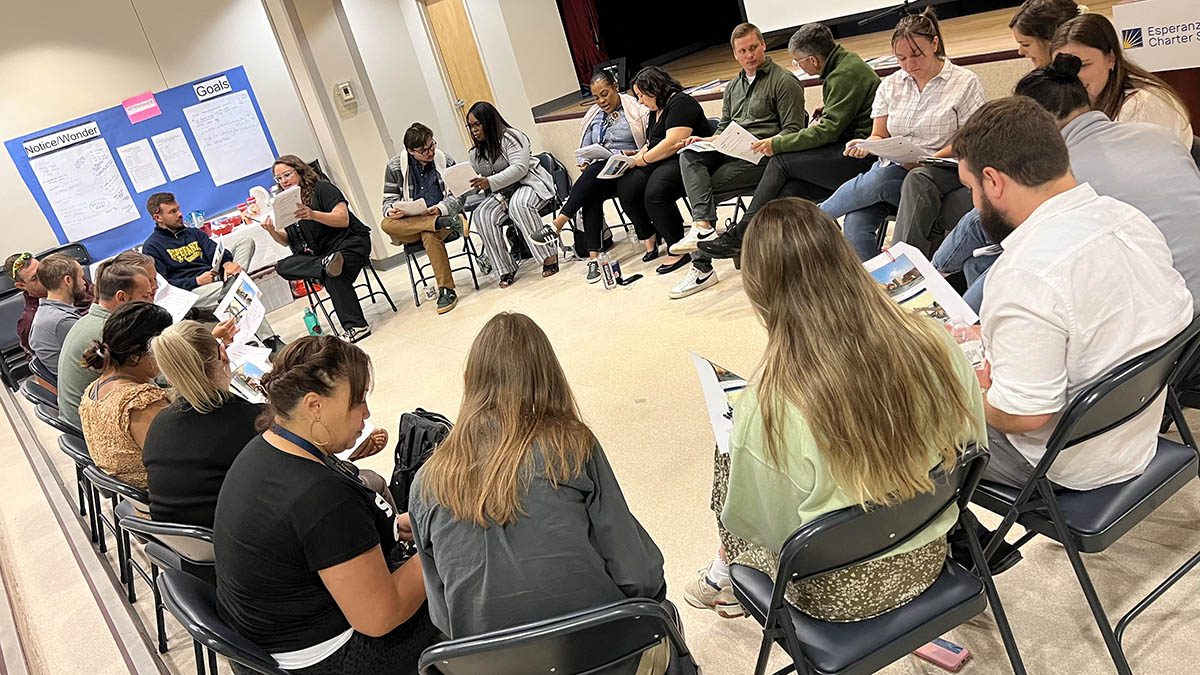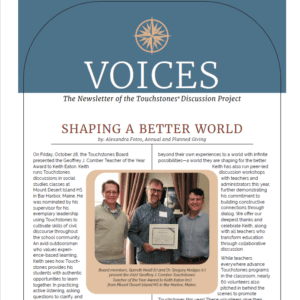By Sharon Thomas, Director of K-12 and Family Engagement Programs
Over the years, teachers and school leaders have identified the need for more civil discourse and collaborative studentinteractions as key reasons for implementing the Touchstones process in classrooms. Whether these concerns are long-standing ones in a given school or tied to more recent issues such as tensions in their communities, changes in the overall school climate, or online schooling in apandemic, students’ behaviors are clear illustrations of a problem that needs attention. All students need and must cultivatetheir abilities to learn and to grow into adults who can productively navigate the world. Our process supports students inlearning to undo counterproductive communication habits and become more reflective thinkers and listeners with increased empathy.What will support students even more deeply as they undertake this growth is to also address the ways that adultsin the school community communicate with each other.
Students who are not engaging civilly and are not able to collaborate effectively are typically a reflection of adults in their lives, whether at home or in school. After all, community tensions, the school climate,and decisions about the school program did not originate with students. Adults initiate and control those decisions;students then mirror the attitudes and behaviors the adults model for them.
When schools look for change in students, they can often forget a key tenet of change theory across all professionalcultures: if the people with power are not changing along with their employees, the people who report to them willhave much more difficulty in changing. For students, this means that if the adults in the building aren’t engaging in civildiscourse with each other or are not collaborating well, we shouldn’t and can’t expect students to improve much in thoseareas. Expecting students to outperform the adults around them is unrealistic and unfair expectations.
I was in the instructional coaching universe for many years as a school-based coach and as a consultant to schools.One of the most frequent refrains I would hear from leaders about any kind of change was, “We need teachers to do this[insert change program] now, with fidelity, to turn things around for students.” That sense of urgency feels very real andresponsible to leaders in a school, but the hard, research-based truth of change is that commanding teachers to change quickly and perfectly (“perfectly” is what we’re really saying when we say “with fidelity”) without time for practice anddeep learning makes teachers feel more like they’re being treated like children and less like the professional humanbeings they are.
If teachers don’t feel that they are treated civilly and as professional collaborators by their leaders, it may bemuch harder for those teachers to encourage the type of thinking and student leadership that Touchstonesteaches. If teachers don’t treat students civilly and as collaborative humans, students will be less able to engage inthose ways with peers. Students are not only a reflection of what is happening in larger society; they are also areflection of what is happening with the adults in a school.
Forming a Touchstones group with a faculty, a grade level or content-area department, support staff, parents, leaders—with any adults who are stakeholders in the school environment—helps adults in that school community to learn to engage in their work more authentically. In return, they will feel moresupported in their roles and initiatives. This form of active professional development also provides students with direct models of the types of engagement we want them to emulate as students and as people. These are models that make their own growth more possible.
While it’s easy to roll our eyes and shake our heads at student behavior, what’s actually more helpful is to look mostclosely at ourselves and examine how we, as adults in the school, may be the root cause of those behaviors. Then we canbegin to reshape the school culture with both adults and kids—creating a more civil, more humanizing, and more engaging world for everyone in the community.
Photos: one of kids and teachers together, one of teacher PD in a circle




 Join the
Join the